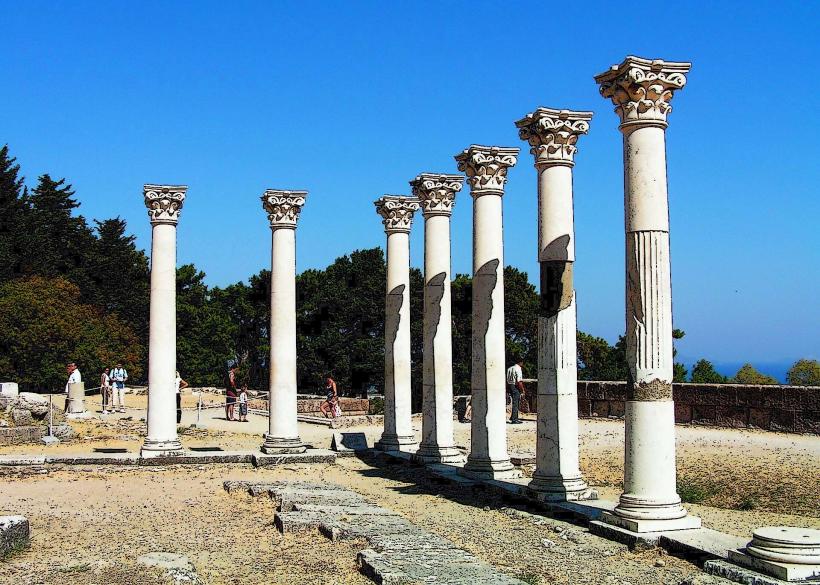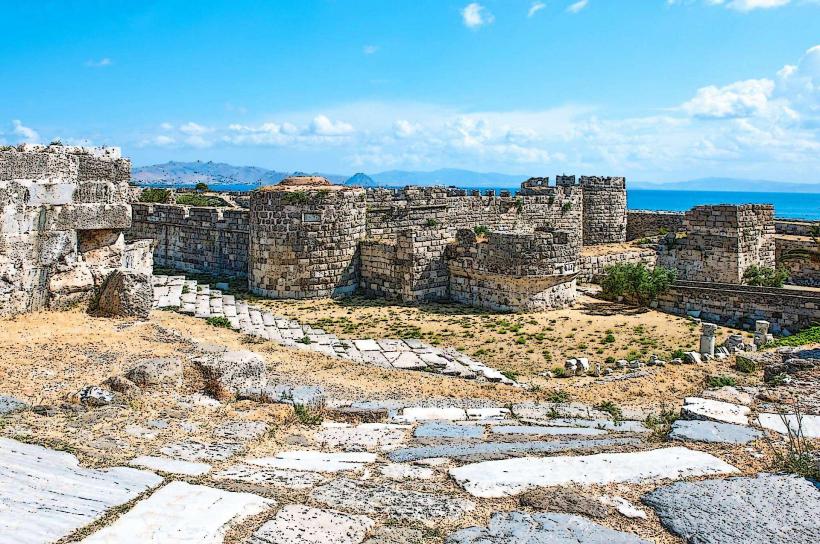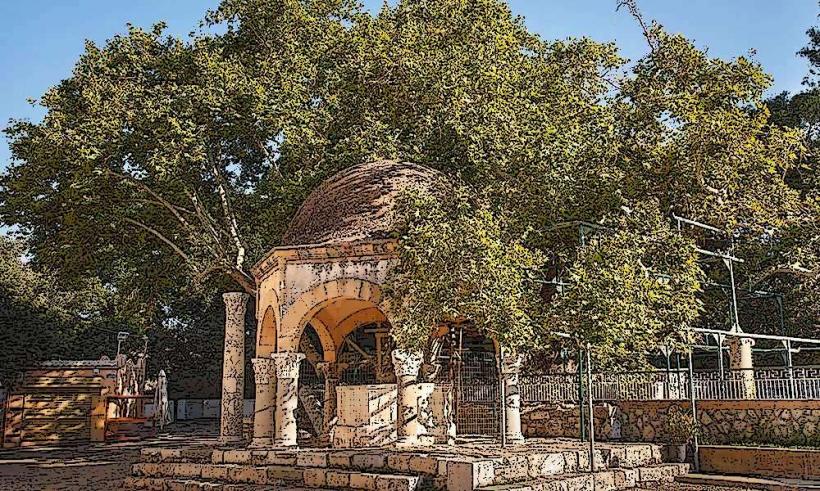Information
Landmark: Ancient Agora of KosCity: Kos
Country: Greece
Continent: Europe
The Ancient Agora of Kos is an important archaeological site located in the heart of Kos Town, Greece. It provides a glimpse into the daily life of ancient Kos, which was one of the most prosperous cities in the ancient Greek world. The Agora was the center of social, commercial, and political life in ancient times, serving as a marketplace and gathering place for public events. The site offers valuable insights into the urban planning, architecture, and cultural practices of ancient Greek society.
1. Historical Significance
- The Ancient Agora of Kos dates back to the 4th century BCE, during the height of the Hellenistic period. However, the site continued to be developed and modified over several centuries, reflecting the changing political and cultural influences on the island.
- Kos, famous as the birthplace of Hippocrates, the Father of Medicine, was a thriving center of culture, philosophy, and medicine in the ancient world. The Agora of Kos played a key role in the city's urban landscape and was central to public life, acting as both a commercial and civic hub.
- The Agora has been extensively excavated, revealing well-preserved remains of the structures that once stood there, including temples, public buildings, stoas (covered walkways), shops, and statues.
2. Key Features of the Ancient Agora
- Stoa of Hermes: One of the most prominent structures of the Ancient Agora is the Stoa of Hermes, a long covered walkway or portico, which likely served as a space for merchants, philosophers, and citizens to gather. The stoa is named after the god Hermes, the god of trade, who was often associated with commerce and the marketplace.
- The Temple of Aphrodite: Another important feature of the site is the Temple of Aphrodite, dedicated to the goddess of love and beauty. The temple was part of a larger complex and was likely used for religious and ceremonial purposes. The foundations of the temple and some of its columns are still visible.
- Public Buildings and Shops: The Agora housed various public buildings, including baths, shops, and administrative offices. These structures were often arranged in a grid-like pattern, typical of Hellenistic and Roman urban planning.
- Basilica and Other Religious Structures: The remains of a Basilica (an early Christian church) can be found on the site, indicating the religious evolution of Kos as the city transitioned from ancient Greek to early Christian influences. Additionally, there are other smaller religious structures and altars that were likely used for local worship.
- Statues and Monuments: Several statues and monumental inscriptions were discovered in the Agora, honoring gods, famous citizens, and benefactors of the city. These statues and inscriptions are important artifacts, offering insights into the values and political life of the time.
- Paved Streets and Columns: The Agora was laid out with wide, paved streets lined with columns, a hallmark of Hellenistic architecture. The remains of these streets and columns provide a sense of the grandeur of the original marketplace.
3. Excavations and Discoveries
- Excavations of the Agora began in the late 19th century and have continued over the years, revealing much about the city's urban life. Many of the artifacts and architectural remains uncovered at the site are now housed in the Archaeological Museum of Kos, providing further context and detail for the history of the Agora.
- One of the most notable discoveries is the statue of a Roman emperor (likely Emperor Augustus), which was found in the Agora and is now on display in the museum. This and other statues from the site help to understand the political and cultural transitions in Kos over time.
- The plan of the Agora was carefully laid out, with an emphasis on open public spaces, reflecting the democratic ideals of the ancient Greeks. The layout was designed to facilitate gatherings, commerce, and public speeches, creating a vibrant urban center.
4. Architectural Style and Layout
- The architectural style of the Ancient Agora reflects the combination of Greek, Hellenistic, and later Roman influences. The buildings in the Agora were often made of limestone and marble, with Doric columns and other elements typical of ancient Greek architecture.
- The Agora’s design follows the typical Greek rectangular plan, with colonnades (columns) on all sides, creating a peristyle. This was intended to provide shade for the market area, which would have been bustling with activity.
- The layout of the Agora was also functional, with a focus on facilitating trade and civic events. The presence of large open spaces suggests that the Agora was used not only for commerce but also for political meetings, philosophical discussions, and social gatherings.
5. Cultural and Social Functions
- Commerce: The Agora served as the primary marketplace for the people of Kos, where merchants would sell goods such as food, pottery, textiles, and other commodities. It was also a place for artisans to display their crafts.
- Public Gatherings: In addition to its commercial function, the Agora was a place for public assemblies, where the citizens of Kos would gather to hear speeches, engage in political debates, and make important decisions. The Agora was a central feature of civic life in ancient Greek cities.
- Religious and Ceremonial Activities: The Agora was home to several religious structures and altars, and it hosted ceremonies in honor of various gods. It is likely that sacrifices, processions, and other rituals took place here, reflecting the integration of religion and daily life in the ancient world.
- Philosophical Discussions: As with other agoras in the ancient Greek world, the Agora of Kos was likely a gathering place for philosophers and intellectuals, where debates and discussions on topics such as ethics, politics, and science would have taken place. This is especially significant given the island’s association with Hippocrates, who was not only a physician but also a philosopher.
6. Visiting the Ancient Agora of Kos
- The Ancient Agora of Kos is located in Kos Town, just a short walk from the Harbor of Kos and the Tree of Hippocrates. It is easily accessible to visitors and is often included in guided tours of the town’s major archaeological sites.
- The site is open to the public, and visitors can freely explore the remains of the ancient marketplace, viewing the structures, columns, and statues that have been uncovered. Signage at the site provides additional information about the history and significance of the Agora.
- The best time to visit is in the early morning or late afternoon, when the temperatures are cooler and the site is less crowded. As with other archaeological sites, visitors are encouraged to bring water, wear comfortable shoes, and be prepared for sun exposure.
- The Kos Archaeological Museum is nearby and offers further context for understanding the significance of the Agora and the artifacts found there, including pottery, statues, and inscriptions.
7. Conclusion
The Ancient Agora of Kos is a remarkable archaeological site that offers a window into the social, commercial, and political life of ancient Kos. With its combination of Greek, Hellenistic, and Roman influences, the Agora is a testament to the island’s importance as a hub of culture, philosophy, and trade in the ancient world. Visiting the Agora allows one to connect with the everyday life of ancient Greeks and reflect on the legacy of Kos as the birthplace of Hippocrates and its long history of intellectual and cultural achievement.




